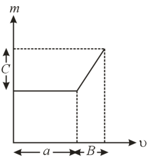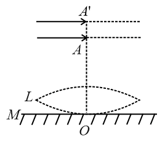Kumar Mittal Solutions for Exercise 2: For DIFFERENT COMPETITIVE EXAMINATIONS
Kumar Mittal Physics Solutions for Exercise - Kumar Mittal Solutions for Exercise 2: For DIFFERENT COMPETITIVE EXAMINATIONS
Attempt the free practice questions from Exercise 2: For DIFFERENT COMPETITIVE EXAMINATIONS with hints and solutions to strengthen your understanding. ISC Physics Class 12, Part-2 solutions are prepared by Experienced Embibe Experts.
Questions from Kumar Mittal Solutions for Exercise 2: For DIFFERENT COMPETITIVE EXAMINATIONS with Hints & Solutions
Two similar thin equi-convex lenses, of focal length each, are kept coaxially in contact with each other such that the focal length of the combination is . When the space between the two lenses is filled with glycerine (which has the same refractive index () as that of glass) then the equivalent focal length is . The ratio will be:
One plano-convex and one plano-concave lens of same radius of curvature ‘’ but of different materials are joined side-by-side as shown in the figure.If the refractive index of the material of is and that of is , then the focal length of the combination is:
The graph shows how the magnification produced by a thin lens varies with image distance . What is the focal length of the lens used?

A thin convex lens (refractive index ) is placed on a plane mirror . When a pin is placed at , such that , its real inverted image is formed at itself, as shown in figure. When a liquid of refractive index is put between the lens and the mirror. The pin has to be moved to , such that , to get its inverted real image at itself. The value of will be:

A convex lens (of focal length ) and a concave mirror, having their principal axes along the same lines, are kept apart from each other. The concave mirror is to the right of the convex lens. When an object is kept at a distance of to the left of the convex lens, its image remains at the same position even if the concave mirror is removed. The maximum distance of the object for which this concave mirror, by itself would produce a virtual image would be:
What is the position and nature of image formed by lens combination shown in figure? (, are focal lengths)

A plano-convex lens is made of a material of refractive index . When a small object is placed away in front of the curved surface of the lens, an image of double the size of the object is produced. Due to reflection from the convex surface of the lens, another faint image is observed at a distance of away from the lens. Which of the following statement(s) is(are) true?
A transparent thin film of uniform thickness and refractive index is coated on the convex spherical surface of radius at one end of a long solid glass cylinder of refractive index , as shown in the figure. Rays of light parallel to the axis of the cylinder traversing through the film from air to glass get focused at distance f from the film, while rays of light traversing from glass to air get focused at distance from the film, then:


